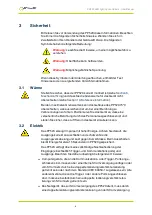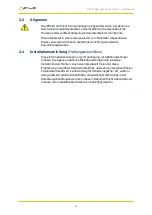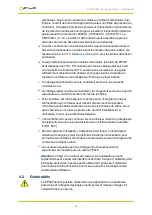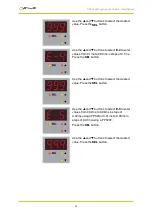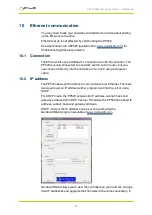
PP520 LED lighting controllers - User Manual
To avoid a fire hazard, consider the implications of overheating in the
unlikely event of a fault in the PP520. The power dissipation in a fault
condition is approximately given by the sum of the following for the two
channels:
(V
PS
-V
L
) x I
PS
Where:
V
PS
= Power supply voltage
V
L
= Rated voltage for lighting
I
PS
= Maximum current delivered by the power supply.
Either limit the power supply output current(s) so that not more than 30W
can be dissipated in the PP520, or mount the unit in an enclosure.
For further information about heat output from the PP520, refer to
.
To limit the power, set the power supply output voltages to the minimum
value required by the LED light and the PP520 together. Chose a PSU that
limits its output current by design, by setting the current limit on the supply
(if this feature exists) or use fuses. Remember to de-rate the fuse if
mounted in an enclosure, as the temperature will be higher than ambient.
An enclosure may also be required for other parts of the system such as
power supplies and should provide mechanical and environmental
protection in industrial applications.
If an enclosure is used, it should be metal or plastic (with a flammability
rating of UL94-V1 or better) and with no holes below or to the sides of the
PP520 when mounted. Cable entries below the PP520 should be through
glands that also have a flammability rating of UL94-V1 or better. Observe
the specified gap between the PP520 and any other part or side of the
enclosure.
—
18
—





